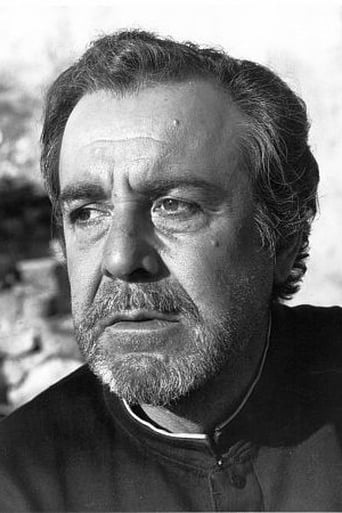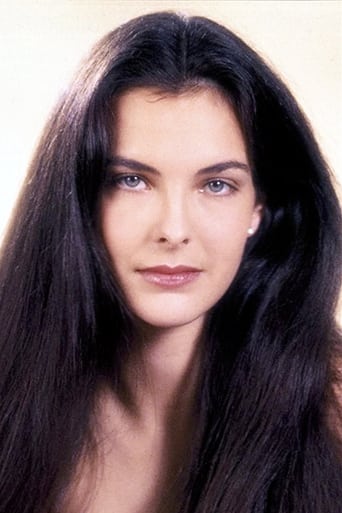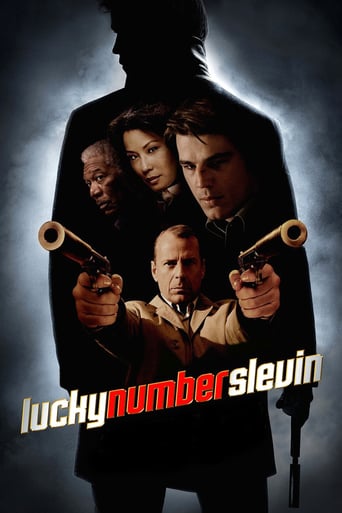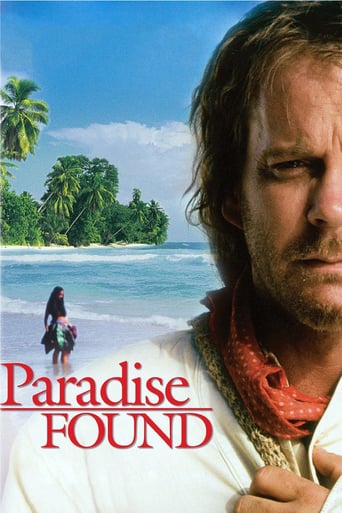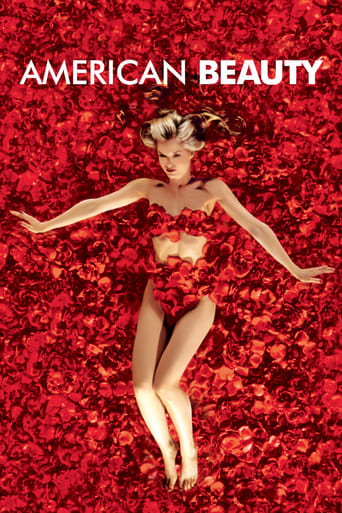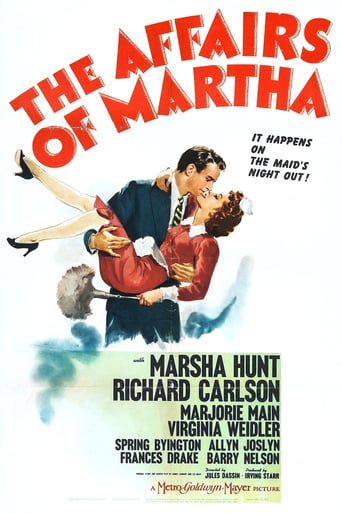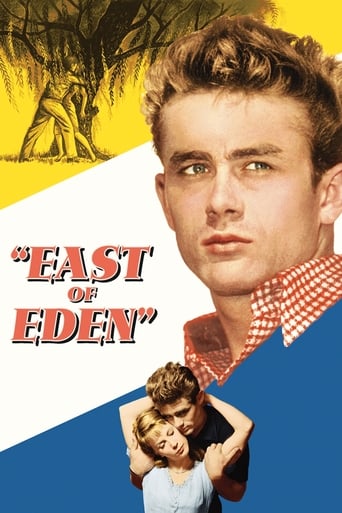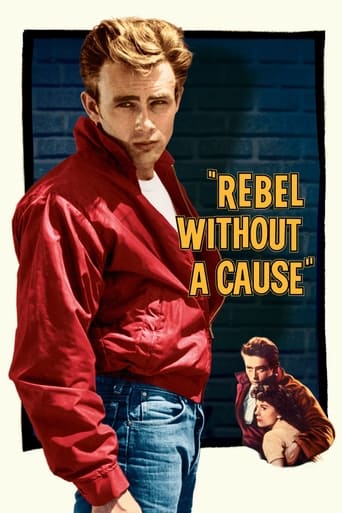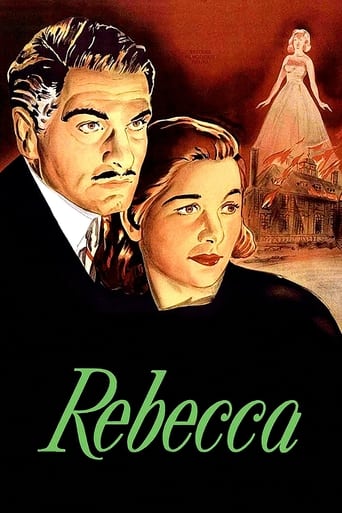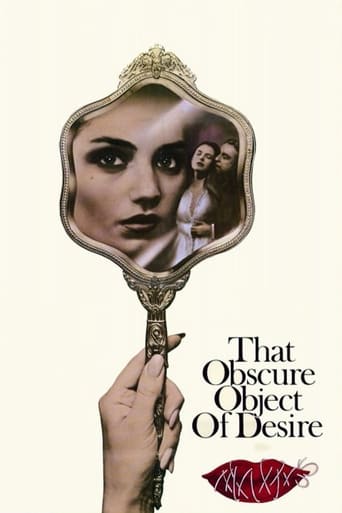

That Obscure Object of Desire (1977)
After dumping a bucket of water on a beautiful young woman from the window of a train car, wealthy Frenchman Mathieu, regales his fellow passengers with the story of the dysfunctional relationship between himself and the young woman in question, a fiery 19-year-old flamenco dancer named Conchita. What follows is a tale of cruelty, depravity and lies -- the very building blocks of love.
Watch Trailer
Cast


Similar titles
Reviews
The performances transcend the film's tropes, grounding it in characters that feel more complete than this subgenre often produces.
The film was still a fun one that will make you laugh and have you leaving the theater feeling like you just stole something valuable and got away with it.
It's the kind of movie you'll want to see a second time with someone who hasn't seen it yet, to remember what it was like to watch it for the first time.
The movie is made so realistic it has a lot of that WoW feeling at the right moments and never tooo over the top. the suspense is done so well and the emotion is felt. Very well put together with the music and all.
'That Obscure Object of Desire' is Luis Buñuel's final film, and one of his best. Even at seventy-seven years old, Buñuel continued to tear-up the rulebook of cinema convention, opting instead for his own subversive, challenging and confrontational style of rebellious surrealism, in which he made all the rules.In 'Object', Fernando Rey plays a wealthy older man lusting after the much younger fiery Spanish beauty, Conchita. Buñuel's dark social satire always boasts a viciously hilarious joke: this time the joke is the concept of using two different actresses to play the same role but never acknowledging it, and switching them around arbitrarily, forming a dizzying mood. That Fernando Rey's character 'Mathieu' never notices his woman's changing physiognomy is the grand gag: Mathieu is so vain and self-obsessed in a privileged bourgeois manner, that he is in love with the idea of having a much younger, beautiful woman on his arm -- what she specifically looks like or who she is isn't especially important.Conchita accepts Mathieu's financial gifts but never sleeps with him -- even going to such extreme lengths as to wear a leather chastity belt in bed with him -- much to Rey's initial disappointment and, eventually, anger. After a large argument concluding with Mathieu throwing Conchita out of his house, the couple are eventually reunited by chance in Seville, much to their surprise and joy; but even then they are separated by symbolic iron bars -- the universe continues to hold them apart, even at their happiest moments (or is it Conchita that consciously holds them apart?). Despite Mathieu's stuffy vanity typical of the bourgeoisie when dealing with the poor, it's hard not to feel some sympathy for the naive older man being taken for a ride by the twin-headed manipulative commoner Conchita.Sexual anxiety and the eternal futility of lust have been a staple of Buñuel's film-making ever since his first feature, the legendary 'Un Chien Andalou'; indeed, Surrealism and the queasy weirdness of sex and sexuality have always gone hand-in-hand since the former's inception. The anxiety and fear of terrorism in this film is a metaphor for the sexual anxiety and psychosexual uncertainty of the characters. This theme of terrorism-anxiety makes the film extremely current and modern in 2017.The film's final joke arrives in its closing scene: the couple's long-awaited orgasmic consummation finally arrives in the form of a terrorist bomb explosion that kills both, while in the middle of one of their many arguments.
This is a typical Buñuel film , as there is a lot of symbolism and surrealism , including mockery or wholesale review upon sexual behaviors and jealousy of higher classes represented by the great Fernando Rey . Recounted in flashback , it deals with the romantic perils of Mathieu (Fernando Rey was actually dubbed by Michel Piccoli) , a wealthy Spanish old man who obtains a gorgeous 19-year-old girlfriend called Conchita (changing physical identities : Angela Molina and Carole Bouquet , but Maria Schneider walked off the picture in protest at the amount of nude scenes) , daughter of a poor woman (Maria Asquerino) . But Conchita refuses to sleep with him . Buñuel's masterpiece filled with drama , surrealism , romance , terrorism , and colorful as well as absurd images . Surrealism and sour portrait upon higher classes , an extreme sexual obsession of an elderly man on a very young woman and their subsequent sexual rites by the Spanish maestro of surrealism , the great Luis Buñuel . "That Obscure Object of Desire" also titled ¨Cet Obscur object Du Désir¨ or ¨Ese Oscuro Objeto Del Deseo¨ is available with subtitles or dubbed and contains a lot of surrealist images , such as the sack scenes , when a gypsy carries a hog , baby-alike , and when it appears a woman mending a bloody nightgown , in fact , this was the last scene Luis Bunuel shot as a filmmaker . Luis Buñuel was given a strict Jesuit education which sowed the seeds of his obsession with both subversive behavior and religion , and that would preoccupy Buñuel for the rest of his career . Interesting and thought-provoking screenplay from the same Luis Buñuel and Jean Claude Carriere , Buñuel's usual screenwriter , and based on the novel "La Femme Et Le Pantin" , which has been used as the premise for several other movies , including : ¨The Woman and the Puppet¨ (1920) by Reginald Baker with Geraldine Farrar , "La Femme Et le Pantin" (1929) by Jacques Baroncelli with Conchita Montenegro , ¨The Devil Is a Woman¨ (1935) by Josef Von Stenberg with Marlene Dietrich , Lionel Atwill , Cesar Romero , and ¨La Femme et Le Pantin¨ (1959) by Julien Duvivier with Brigitte Bardot and Antonio Vilar . Very good performance by Fernando Rey as a middle-aged French sophisticate person who falls for his former chambermaid . Acceptable acting from two young beautiful actresses : Angela Mólina and Carole Bouquet , the decision to use two players to play Conchita saved the movie from dropping out . Maria Schneider was dismissed from the film , the true reason was her heavy drug use , which caused her to give a "lackluster" interpretation and caused tremendous friction between her and Buñuel . Pretty good support cast gives fine acting ; it is mostly formed by nice French actors , such as Julien Bertheau , Milena Vukotic , André Weber and Spanish ones , such as Maria Asquerino and David Rocha . In addition , Luis Buñuel cameo : as in 'Belle De Jour' and 'Phantom of Liberty' Buñuel does another walk-on in streets , immediately after Fernando Rey's first scene , as Luis and his chauffeur are blown to bits on their way to the bank , victims of an unexplained terrorist attack .Thid wry and enjoyable motion picture was well photographed by Edmond Richard and being compellingly directed by Luis Buñuel who was voted the 14th Greatest Director of all time . This Buñuel's strange film belongs to his French second period ; in fact , it's plenty of known French actors . As Buñuel subsequently emigrated from Mexico to France where filmed other excellent movies . After moving to Paris , at the beginning Buñuel did a variety of film-related odd jobs , including working as an assistant to director Jean Epstein . With financial help from his mother and creative assistance from Dalí, he made his first film , this 17-minute "Un Chien Andalou" (1929), and immediately catapulted himself into film history thanks to its disturbing images and surrealist plot . The following year , sponsored by wealthy art patrons, he made his first picture , the scabrous witty and violent "Age of Gold" (1930), which mercilessly attacked the church and the middle classes, themes that would preoccupy Buñuel for the rest of his career . That career, though, seemed almost over by the mid-1930s, as he found work increasingly hard to come by and after the Spanish Civil War , where he made ¨Las Hurdes¨ , as Luis emigrated to the US where he worked for the Museum of Modern Art and as a film dubber for Warner Bros . He subsequently went on his Mexican period he teamed up with producer Óscar Dancigers and after a couple of unmemorable efforts shot back to international attention with the lacerating study of Mexican street urchins in ¨Los Olvidados¨ (1950), winning him the Best Director award at the Cannes Film Festival. But despite this new-found acclaim, Buñuel spent much of the next decade working on a variety of ultra-low-budget films, few of which made much impact outside Spanish-speaking countries , though many of them are well worth seeking out . As he went on filming "The Great Madcap" , ¨El¨(1952) , ¨The brute¨ (1952) , "Wuthering Heights", "The Criminal Life of Archibaldo De la Cruz" (1955) , ¨Death in the garden¨(1956) , ¨Nazarin¨(1958) , ¨Robinson Crusoe¨ , ¨Fever mounts El Paso¨(59) , ¨The exterminator Angel¨(62) , ¨Simon of desert¨(1966) and many others . And finally his French-Spanish period in collaboration with producer Serge Silberman and writer Jean-Claude Carrière with notorious as well as polemic films , such as ¨Viridiana¨ , ¨Diary of a chambermaid¨ (64) , ¨the milky way¨(1968) , ¨Tristana¨ (70) , ¨Belle De Jour¨, ¨The Discreet Charm of the Bourgeoisie" (1977) , and this his last picture , "That Obscure Object of Desire" .
If I was forced to pick a favourite filmmaker, I would have to pick Luis Buñuel. He saw people for the deeply flawed things we are, yet really kind of loved us for our absurd refusal to accept our weaknesses. His last film stars Fernando Rey as an urbane, dignified gentleman who falls hopelessly in love with Conchita, a young woman he meets working as his maid and who he actively pursues and couples with on and off throughout the film. She returns his affection, but refuses to let him conjugate their relationship. She alternates between hot and cold, promising to sleep with him and then withdrawing at the last moment, viciously rebuking him and then begging him to come back. This sounds like she is the villain of the piece, but it's never that simple with Buñuel. Her repeated statement that she loves him wholeheartedly, but is refusing him only this one small part of her has a certain absurd plausibility to it. When Maria Schneider walked off the film, Buñuel replaced her with two actresses. Conchita is alternately played by Carole Bouquet ("For Your Eyes Only") and Ángela Molina ("Live Flesh"). It's tempting to seek a pattern in this bold bit of weirdness, but really there's no deeper meaning to this move. It's a last bit of absurdist genius from a true master.
Our obsessions can sometimes get the best of us. Whether it's a piece of art we want to perfect or a person we're dangerously fixated on, as long as you can't grasp your desires with your own two hands, it's as bothersome as a mosquito picking at your arm.Mathieu (Fernando Rey) is having such a dilemma. He is middle-aged, impeccably dressed, and well-mannered. He has been a widower for a few years, and the lifestyle of a lonely, wealthy man has been suiting him well. But that all changes when he meets Conchita, who is hired as a chambermaid. Conchita is 18, sly, and ethereally beautiful; she's played by two different women, Carole Bouquet and Ángela Molina. Mathieu wants her, Conchita reciprocates but she won't sleep with him.When we first catch a glimpse of Mathieu and Conchita's erotic love-hate relationship, they are on the hate side. Mathieu barely misses a train, but once he boards, a young woman chases after him. She dons a black eye, tears awaiting in her eyes. Mathieu tips the conductor, and in return, he receives a bucket, fills it with water, and dumps it onto Conchita's poor, beautiful head. At first, we think she's merely a victim. But there's more than what meets the eye.Once Mathieu finds his seat, the passengers among him stare at him with intense curiosity. After all, the scene they just witnessed was straight out of a telenovela or a Hollywood melodrama. As soon as Mathieu begins to explain himself, we are drifted back into flashbacked storytelling; that's when the film officially begins.That Obscure Object of Desire is Luis Buñuel's final film. Few would choose to explore the themes of sexual frustration as a swan song, but yet again, one of Buñuel's most memorable moments in his long career was when he mock-sliced a woman's eyeball in 1929. Buñuel's odd decision to cast two actresses in the role of Conchita sounds strange in concept but in actuality is a brilliant move. In the more sophisticated, glamorous settings, she is portrayed by Bouquet, who possesses a sort of French New Wave attractiveness that is reminiscent of Catherine Deneuve's famous coldness. In the more hot and heavy, emotionally sarcastic scenes, the buxom Molina takes over, showing Conchita's more fiery, teasing side. But in either situation, Conchita is a both a fixture and a woman of otherworldly dimensions; Bouquet and Molina are superb.Because she is played by two different women, the point Buñuel is trying to make is abundantly clear: Conchita's allure has nothing to do with her looks. Her inaccessibility is what makes her such a catch. Most likely, Mathieu has always gotten everything's he's wanted, from the time he was merely a child. The more he attempts to court Conchita, the stronger his simultaneous hate and passion for her becomes. He buys her expensive gifts. He lets her stay in his luxurious mansion. He pays off her mother's debts. He treats her like a goddess. While she says she loves him and has a clear appreciation of his favors, she simply will not give her body to him. Mathieu doesn't understand. How could he, a man usually treated with such respect, be rejected without any thought? He has bought Conchita everything she could ever want. His torture is both endless and fascinating. He is repulsed but unable to back away; no matter what Conchita does, the fact that Mathieu will never know what's she's like in bed could kill him. It's a shallow thought, yes, but That Obscure Object of Desire provides us with the fact that we don't truly know how much our wants and needs can affect us until it's proved that we can never attain them.Rey gives such a conflicted performance that it's hard not to feel sympathy for him. The premise of the film is so simple, and Rey's dilemma is almost of teenaged ambition; but you can tell that even if his conceptual love of Conchita is stronger than his authentic adoration, the constant rejection is like a slow dosage of poison. She says she loves him, but would someone who loves you really put you through so much pain? Through all of Mathieu's tears, bitterness, and closed off emotions, Rey is a knockout.In one of the final shots of the film, Mathieu and Conchita peer through a shoppe window; inside, a woman is fixing a hole in a piece of bloodied cloth. We take a closer look; the hole has not been formed by an accident — instead, the woman is puncturing a hole, fixing it, puncturing it, fixing it again, and on and on. It mirrors the previous events in That Obscure Object of Desire; the desire grows, is destroyed by Conchita, is renewed, until Conchita destroys it again. Sexual frustration can suck, and That Obscure Object of Desire is a film that tops nearly every final film in any director's filmography.


